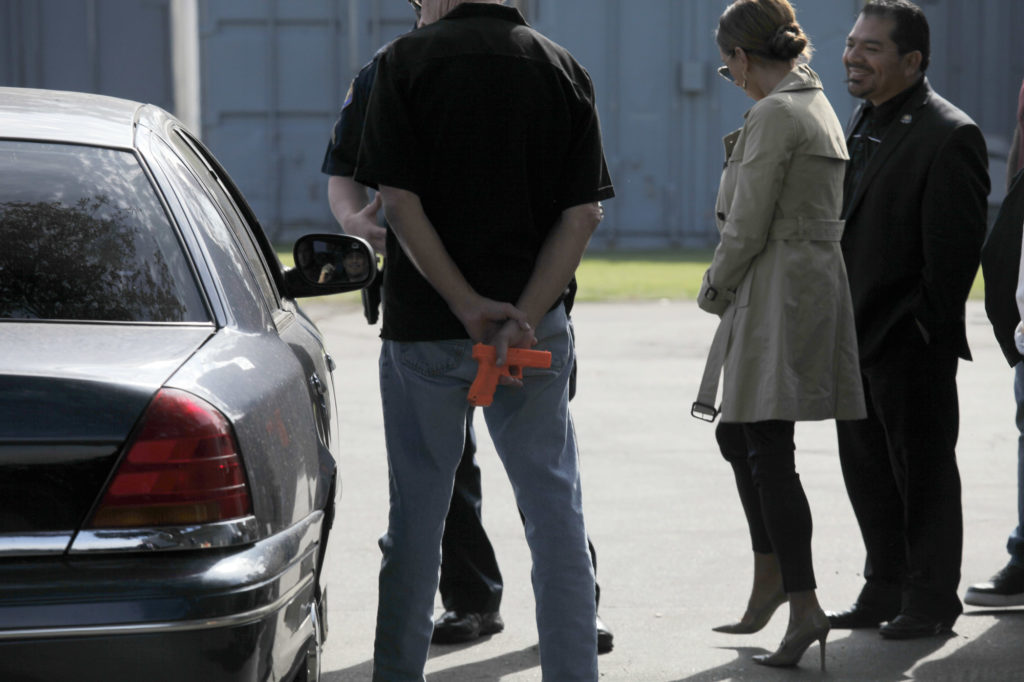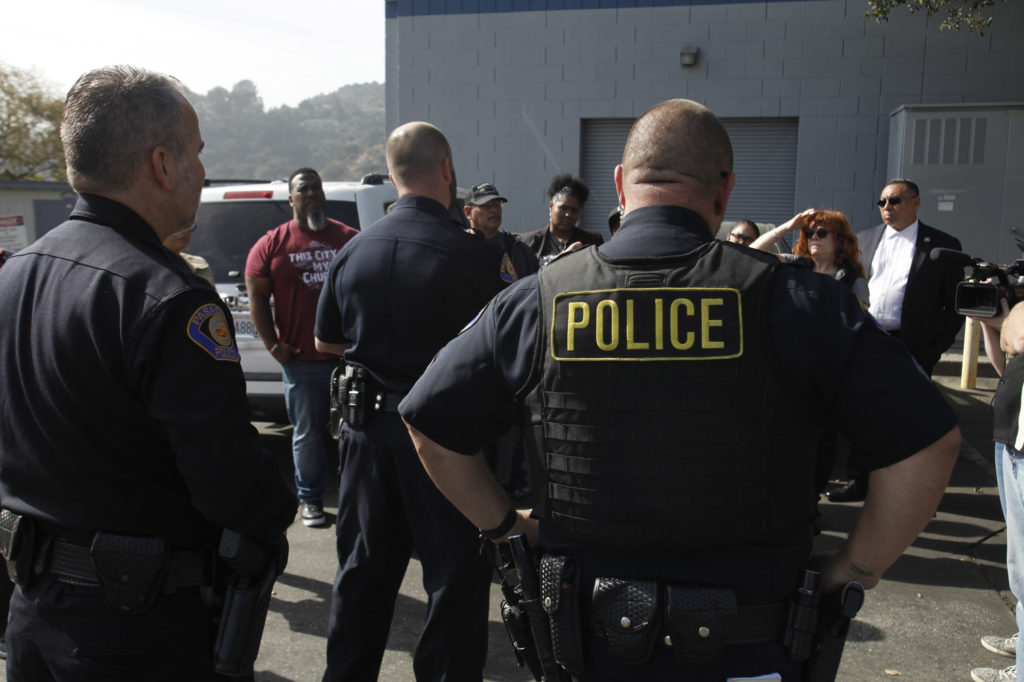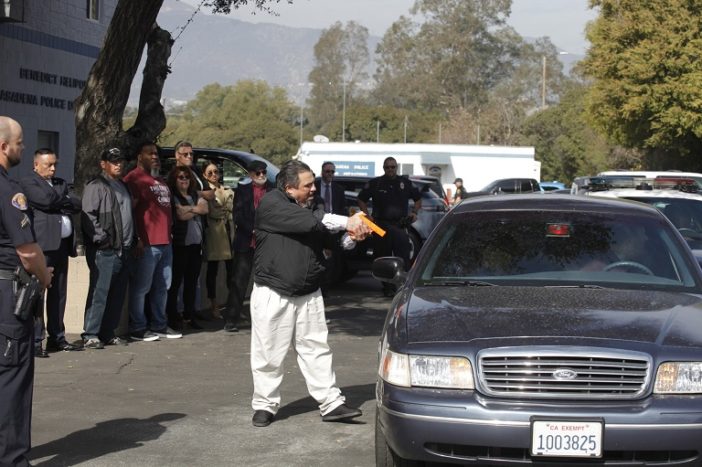Even law abiding citizens will likely have at least one encounter with a police officer during their lifetime and the odds are pretty high that the encounter will occur during a traffic stop.
Knowing how to behave, along with understanding why you’re being pulled over can make the experience run smooth.
For that reason, “Anatomy of a Traffic Stop” was one of two topics covered in the Pasadena Police Department’s Policing 101 session held at the Pasadena Police Heliport in Altadena on Nov. 14.
Pasadena Police Chief John Perez decided to host the interactive events periodically to give the media, and the public, some insight into the day-to-day decision making officer’s face.
Officers pull over drivers for one of several reasons, said Cpl. Danny Morris, an 18-year police officer who trains officers fresh out of the academy.
When you see the flashing red lights in the rear view mirror, it’s likely you’ve committed a traffic violation or your vehicle is unsafe to drive,” Morris said.
Or maybe you fit the description of a suspect who committed a crime or perhaps your vehicle fits the description of one used in a crime.
“We need to remind ourselves of that in these situations because many times I know a whole lot more about a situation based on how you’re responding or where your eyes are looking or where your hands are starting to go, instead of what your words are,” Morris said. “Our actions speak louder than our words.”

Pasadena police offers talk with participants taking part in a simulated police traffic stop during Pasadena Police Department Policing 101 an interactive educational session with local media as to what law enforcement officers face everyday at the Pasadena Police Heliport in Altadena on November 14, 2019. (photo by James Carbone)
So, Morris said, motorists should follow the so-called S.A.F.E. principals, when pulled over by a police officer:
Show your hands and avoid sudden movements.
Ask for permission to reach for something such as your license and registration.
Follow instructions that are within your legal rights.
Exchange information that is within your legal rights.
“I have no idea who I’m walking up to in that vehicle and so these guidelines are a good common ground for us to get through this on the same page,” Morris said.
Morris showed videos taken from officers’ body worn cameras, showing actual traffic stops that appeared routine initially, but then turned bad.
Attendees also got the chance to play the role of a police officer approaching a vehicle that has just been pulled over.
The other half of the session was titled K9 Deployments: How and Why?
Cpl. Matt Widger, Pasadena PD K9 handler, discussed department polices related to the use of K9s, who are deployed to sniff for narcotics and explosives, search for suspects and help to subdue suspects.
All four of Pasadena PD’s K9s are trained to patrol along with their ability to sniff for drugs, explosives and articles, Widger said.
A sniff from a well-trained narcotics detection dog is enough to establish probable cause for a search, the corporal said.
“He can smell things 100 yards away and start giving us direction to that general area,” Widger said.

Pasadena Police Department’s Policing 101 an interactive educational session with local media as to what law enforcement officers face everyday at the Pasadena Police Heliport in Altadena on November 14, 2019. (photo by James Carbone)
Pasadena PD uses K9s to search the inside and outside of the Rose Bowl, prior to events.
Every vehicle entering the Rose Bowl grounds must also be cleared by an explosives detection K9.
“There are millions of people a year that travel through Pasadena, and unfortunately, for those people who want to do us harm, their eyes are on us,” Widger said. “So our job is to really deter that. So we are very visible.”
And yes, there are occasions when a K9 needs to be used to help take down a suspect.
While deploying a K9 is considered a use of force, it is a less lethal use of force, the courts have determined that using a K9 to take down a suspect does not constitute deadly force.
“Dogs are one of the safest options and best options,” Widger said. “The uses of a K9 is obviously safer for us, but also for the suspect. It actually lowers the risk of a suspect being shot.”
Additionally, K9s can be used in situations where there may not even be an eminent threat, Widger said.
“They’re not always perfect,” Widger said. “Every situation is different. Every environment is different. From slick floors to dark environments, to someone underneath a house or up in a tree, so we try to train dogs in all kinds of variations of training and environments so we don’t have any failures in the field and trying to expose them to as much as we possibly can.”

Participants take part in a simulated police traffic stop during Pasadena Police Department’s Policing 101 an interactive educational session with local media as to what law enforcement officers face everyday at the Pasadena Police Heliport in Altadena on November 14, 2019. (photo by James Carbone)
 Behind the Badge
Behind the Badge



